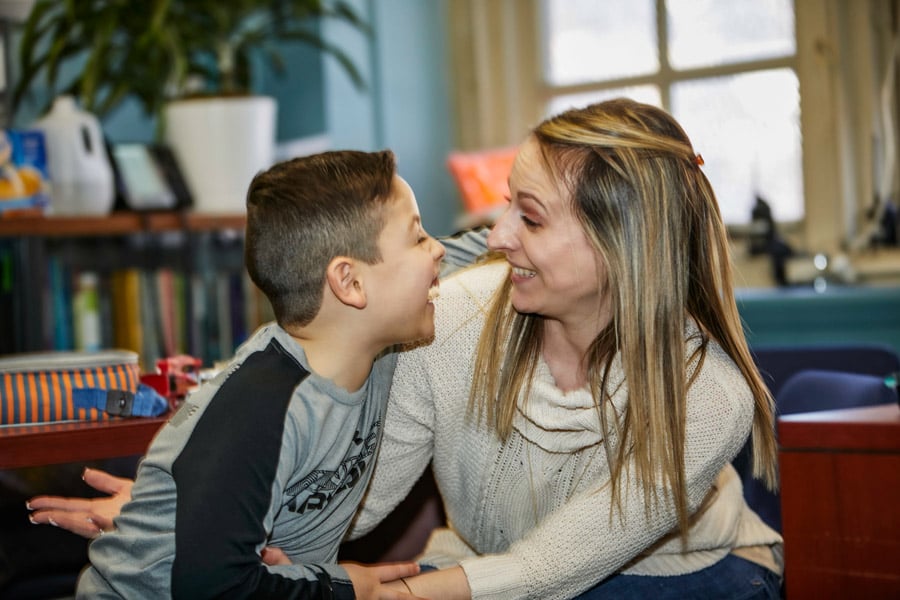TOOLKIT
Trauma-informed practices that benefit all learners

Predictability with Flexibility
Classroom Rituals
One of the best ways to enhance predictability in the classroom is through the use of consistent routines and rituals. Facilitating a community meeting on a daily or weekly basis is a great routine for strengthening relationships, and it also reserves time for you to flexibly address student needs and concerns as they arise. You can use this time for a broad range of activities, including a mindfulness word of the week, a community thinking challenge, or to highlight a star student of the day.
- Learn More: 5 Steps for Leading a Morning Meeting Focused on SEL [Pathway 2 Success]
- K-6 Strategy: Cool Kid [Greater Good in Education]
- K-2 Strategy: Star Student of the Day [Teaching Channel]
- Resource: Community Meeting Slides
- K-2 Resource: Teacher Feature -- Star Student of the Day [Christina Robinson, Elaine Wynn Elementary School]
Avoiding Triggers
Creating a classroom environment that balances predictability and flexibility includes being thoughtful about planning routines and assignments that reduce stressors for students who have experienced trauma, and when that’s not possible, providing them with alternatives that can help them self-regulate.
- Learn More: 7 Surprising Classroom Triggers for Kids Who Experienced Trauma (and How to Avoid Them) [We Are Teachers]
- Learn More: How Teachers Can Use Trauma-Informed Mindfulness Practices to Support their Students [Project Change Maryland]
Empowerment
Support Student Reflection
Reflection is a powerful tool for strengthening growth mindset and for helping students develop agency over their learning. While we may default to asking students to reflect on behaviors we see as negative, it is important to have students reflect on both academic and behavioral choices and actions, in moments of success and moments of challenge.
- Learn More: Treating Reflection as a Habit, Not an Event [Edutopia]
- Resource: Student Reflection Handout
Provide Students with Choices
Allowing students to take part in decision making processes that impact them is one of the strongest tools of empowerment in the classroom. Providing students with choice in both academics and behavioral activities reinforces intrinsic motivation to learn and take part as active participants in their own experiences in and out of the classroom.
- Strategy: Give Choices [PBIS World]
- Resource: SEL Choice Board [Sunnyvale School District]
Connection
Build Relationships
The best way to build relationships with students is simply to talk to them, and to listen with focus and curiosity to what they say. Begin the year by giving a student interest survey– this will help you know what kinds of questions to ask students when you talk to them one-on-one. As you learn about your students, keep track of the important interests and people in their lives and refer back to those touchpoints when you’re checking in with them one on one or talking to them outside of class! However, when building relationships with students, it’s important to respect the boundaries students set, and to avoid taking things personally if students don’t come to us to share every aspect of their lives.
- Strategy: How Dialogue Journals Build Teacher-Student Relationships [Cult of Pedagogy]
- Resource: The 360 Spreadsheet Note: use this to record student data [Cult of Pedagogy]
Create Space for Emotions
When we create opportunities for students to reflect on and express their emotions in the classroom, we are providing opportunities to help students self-regulate and to tell us what they need from the classroom community. It’s a great way to transform the classroom into a place where students can thrive and be their best selves.
- Learn More: Trauma and Teaching: Boundaries and Bridges [Alex Shevrin Venet; Middle Web]
- Learn More: Teaching Emotional Intelligence in Early Childhood [National Association for the Education of Young Children]
- Video: The Mood Meter - An Introduction [Yale Center for Emotional Intelligence]
- Resource: Feelings Wheel [Calm; Originally Created by Dr. Gloria Wilcox]
- Home Resource: The Mood Meter [Yale Center for Emotional Intelligence]
- Home Resource: Talking About Emotions at Home -- English | Spanish